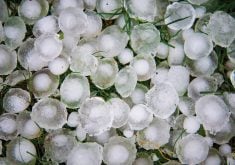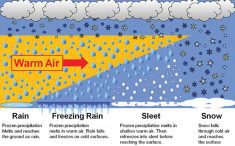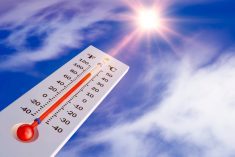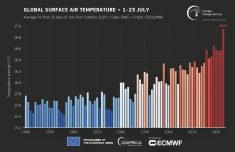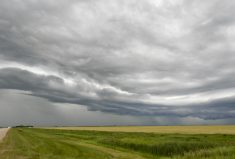It seems that a new list of the top global weather stories of 2016 comes out every day.
So I thought I would go through some of these lists and pick the top stories that are shared by all of the lists. Of course, I might have a slight bias towards Canadian stories.
I don’t think there is any argument that the No. 1 story of 2016 was the record global heat. For the third year in a row, the planet set a record for the warmest year ever. While some of the final numbers are not in, it is pretty much a given that 2016 will be the warmest year on record, with a mean annual temperature that was about 1.2 C above pre-industrial levels. It’s estimated that about 0.2 C of this heating is attributable to the strong El Niño that came to an end at the close of the year. This is the first time since record-keeping began in 1880 that we have seen three consecutive years in a row with record heat.
Read Also
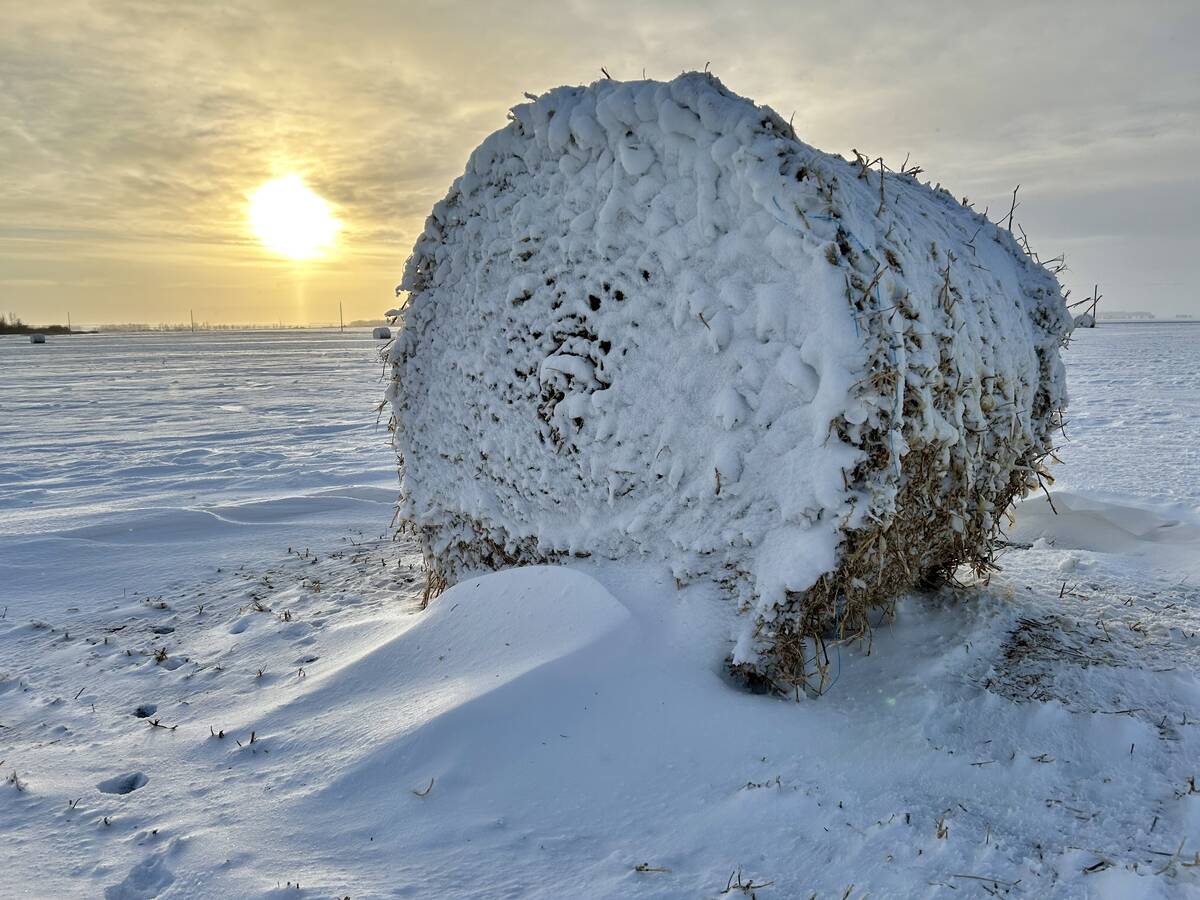
Prairie winter snowfall forecast 2025-2026
How much snow should farmers in Alberta and elsewhere on the Canadian Prairies expect for the rest of December 2025 and into January-February 2026?
The second big weather story of 2016 directly ties into the first story as it also deals with record warmth. This story is about the winter, or rather, lack of a winter across much of North America thanks in part to the very strong El Niño event. For many people across Canada and the northern American states, it was one of the nicest winters ever with near-record-breaking temperatures and very little snowfall. If you are an outdoor enthusiast, then the lack of snow made the winter of 2016 a bust. The warm and dry winter led to a very early spring with little to no flooding across much of Western Canada.
Our third big weather story is also directly tied to the first two. The warm and dry winter and early spring led to the development of perfect forest fire conditions around Fort McMurray. The fire started on May 1 and then, thanks to strong winds, quickly grew out of control. Within two days the fire began working its way into the town and by May 4 the fire could be seen from space. By the time it was done, the Fort McMurray fire burned an area the size of Prince Edward Island and ended up being the costliest natural disaster in Canadian history.
The fourth big weather story of 2016, in my opinion, would be the severe air pollution events that hit India and China. It is extremely difficult to put numbers onto air pollution events; estimates of last year’s extreme events put the number of dead at around five million, with a loss of about $5 trillion to the global economy. High pressure and light winds brought several extended periods of poor air quality to large portions of Asia.
Two events in particular stand out. The first was in New Delhi, when on Nov. 7, levels of fine particulate matter hit 999 micrograms per cubic metre. This is 40 times higher than the World Health Organization guideline. The second incident took place on Dec. 19 in Shijiazhuang, China, when fine particulate levels hit 1,000 micrograms per cubic metre. To put these levels into perspective, breathing this polluted air is equivalent to smoking more than two packs of cigarettes per day.
My fifth top weather-related story of 2016 is carbon dioxide levels. CO2 levels in our atmos-phere surpassed the 400-parts-per-million level in 2016 and stayed there. There was not one week during the year where the average CO2 levels fell below 400 ppm. With CO2 levels continuing to rise we will probably never again see levels below 400 ppm — at least in our lifetime, and probably much longer.
The sixth top weather story of 2016 is actually a continuation of a story that began in 2014. Earth’s third and longest-lasting coral bleaching event hit the Great Barrier Reef particularly hard. The Great Barrier Reef is the world’s largest living structure and the only one visible from space. Only seven per cent of the reef escaped some level of coral bleaching with the northern half of the reef seeing mortality levels in the 47 to 83 per cent range. The bleaching event is due to widespread warming of the oceans due to climate change along with increased ocean temperatures due to the strong El Niño event.
The next story is both global and Canadian. Arctic sea ice continued the trend of record- to near-record-low amounts in 2016. New record lows were set in January, February, April, May, June, October, and November. It wasn’t a record-low year for Arctic ice due to a relatively cool and stormy summer across the Arctic that helped to spread the existing ice cover. Over the last several years, while ice cover in the Arctic Ocean has been declining, Antarctic Ocean ice cover has been increasing. This changed in 2016, with Antarctic ice cover falling below average. As of December, Antarctic ice cover is now running more than two standard deviations below average. Combine this with the low Arctic ice levels and the total global sea ice coverage is now at record lows.
That’s about all the room I have for this issue. Next time we’ll continue our look into the top weather stories of 2016 with a little more emphasis on our part of the world.




